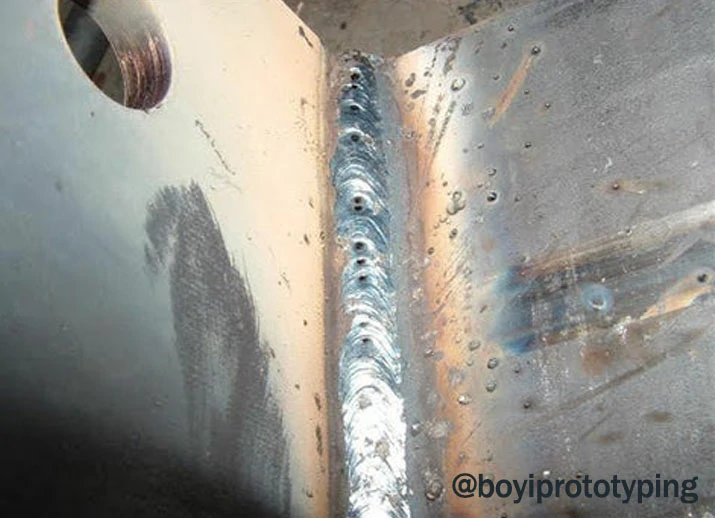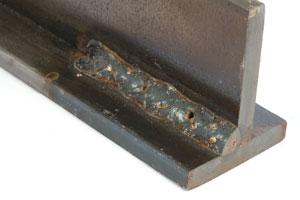What is Porosity in Welding: Understanding Its Causes and Enhancing Your Abilities
What is Porosity in Welding: Understanding Its Causes and Enhancing Your Abilities
Blog Article
Understanding Porosity in Welding: Checking Out Reasons, Impacts, and Prevention Strategies
Porosity in welding is a consistent challenge that can dramatically impact the quality and stability of welds. As professionals in the welding sector are cognizant, comprehending the reasons, impacts, and avoidance strategies connected to porosity is crucial for accomplishing robust and dependable welds. By diving into the origin creates of porosity, analyzing its detrimental results on weld quality, and exploring effective avoidance strategies, welders can boost their understanding and skills to produce top quality welds constantly. The intricate interplay of elements adding to porosity requires a detailed understanding and a positive method to guarantee successful welding end results.
Common Reasons of Porosity
Contamination, in the kind of dust, oil, or corrosion on the welding surface area, develops gas pockets when warmed, leading to porosity in the weld. Incorrect protecting takes place when the shielding gas, typically utilized in processes like MIG and TIG welding, is unable to completely protect the liquified weld pool from reacting with the bordering air, resulting in gas entrapment and subsequent porosity. Furthermore, poor gas protection, frequently due to wrong circulation rates or nozzle positioning, can leave parts of the weld vulnerable, enabling porosity to create.
Results on Weld Quality
The visibility of porosity in a weld can considerably compromise the total high quality and integrity of the bonded joint. Porosity within a weld develops voids or dental caries that damage the structure, making it much more prone to cracking, corrosion, and mechanical failing. These spaces function as anxiety concentrators, minimizing the load-bearing capacity of the weld and increasing the likelihood of early failure under used anxiety. Furthermore, porosity can also offer as prospective websites for hydrogen entrapment, further worsening the degradation of the weld's mechanical properties.
Furthermore, porosity can hinder the effectiveness of non-destructive screening (NDT) strategies, making it testing to discover other flaws or suspensions within the weld. This can cause considerable safety and security issues, specifically in important applications where the architectural stability of the bonded elements is extremely important.

Avoidance Techniques Introduction
Given the destructive effect of porosity on weld top quality, efficient avoidance methods are essential to maintaining the structural integrity of welded joints. Additionally, selecting the suitable welding parameters, such as voltage, present, and take a trip speed, can help reduce the danger of porosity formation. By incorporating these avoidance techniques into welding practices, the incident of porosity can be significantly minimized, leading to stronger and much more trustworthy welded joints.
Significance of Proper Shielding
Correct protecting in welding plays an essential role click over here now in protecting against atmospheric contamination and making certain the stability of bonded joints. Protecting gases, such as argon, helium, or a blend of both, are generally made use of to protect the weld swimming pool from reacting with aspects airborne like oxygen and nitrogen. When these responsive components enter contact with the warm weld swimming pool, they can trigger porosity, resulting in weak welds with decreased mechanical buildings.

Inadequate protecting can lead to numerous defects like porosity, spatter, and oxidation, endangering the structural stability of the welded joint. Consequently, sticking to proper shielding methods is vital to produce top quality welds with marginal problems and guarantee the durability and dependability of the bonded elements (What is Porosity).
Surveillance and Control Techniques
Exactly how can welders effectively check and manage the welding process to make sure optimal results and avoid issues like porosity? By continuously keeping track of these variables, welders can identify inconsistencies from the ideal problems and make instant changes to avoid porosity formation.

In addition, carrying out appropriate training programs for welders is essential for monitoring and regulating the welding process successfully. What is Porosity. Enlightening welders on the value of maintaining consistent criteria, such as proper gas informative post securing and take a trip speed, can help prevent porosity problems. Normal analyses and qualifications can likewise ensure that welders excel in surveillance and managing welding procedures
In addition, using automated welding systems can boost surveillance and control capacities. These systems can precisely manage welding specifications, lowering the probability of human mistake and making certain regular weld top quality. By incorporating advanced surveillance innovations, training programs, and automated systems, welders can efficiently keep track of and regulate the welding procedure to lessen porosity issues and attain top quality welds.
Conclusion

Report this page